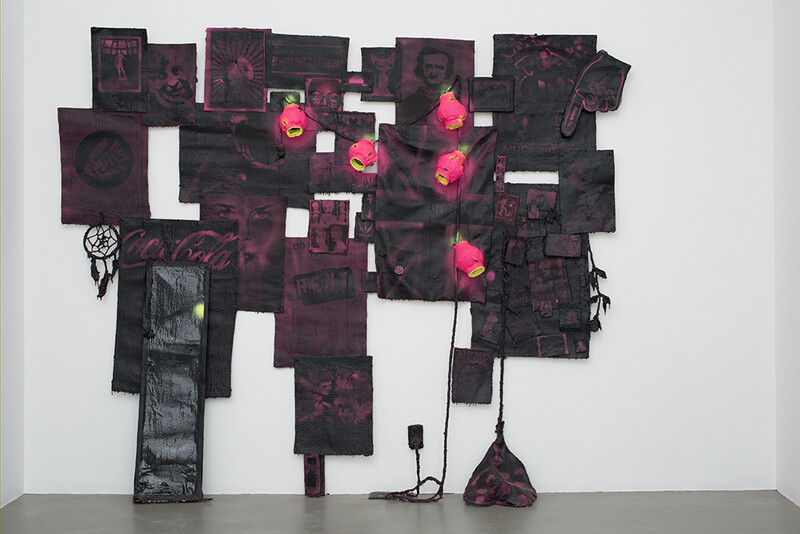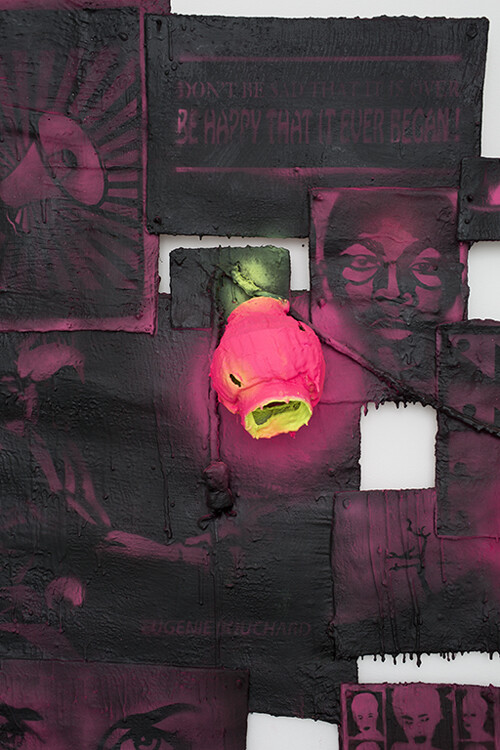

Don't be sad that it is over, be happy that it ever began
In Don't be sad that it is over, be happy that it ever began, San Francisco artist Rhonda Weppler and Toronto artist Trevor Mahovsky recreate a contemporary poster-and-knick-knack-covered UTM student dorm wall in drippy (mainly black) enamel paint over mesh-and-plaster forms. This panoply of memorabilia and pop culture is actually an interconnected and self-supporting bas relief that sits on the floor and leans up against the gallery wall, straddling the traditional terrains of sculpture and painting.
Weppler was an undergraduate UTM student and lived in the campus’s residences in the mid 90s; some of the treasures included in Don't be sad… are renditions of the objects she displayed in her room, such as the dreamcatcher and the comb. Weppler and Mahovsky viewed contemporary UTM dorm rooms during a recent site visit as well, and their artwork reflects this research in objects such as a sport fan’s foam hand or an inflatable valentine heart. The posters reflect the standard sizes of posters and postcards that students might purchase from market-style vendors that periodically appear on campuses. The artists painstakingly created a number of stencils through which to spray paint cut-out silhouette images onto their sculpted posters, snapshots and magazine pages. We see, for example, the poster for the mid- 90s musical Rent, a picture of two young women mugging for the camera, or pages from the magazine Short Hair Styles.
Don't be sad… references the history of painting and sculpture as well: the string of gaudy pink Chinese lanterns plugged into an invented wall plug allude to the American portrait painter John Singer Sargent’s late nineteenth-century work Carnation, Lily, Lily, Rose, which depicts two young girls intently lighting lanterns in a garden in the early evening; the overall black bas-relief is a nod to the American mid twentieth-century sculptor Louise Nevelson’s black bas-relief montages of offcuts, the uncompromising austere modernist. But the yellow light emitted by the lanterns reflects the artists’ interest in acknowledging Sargent’s painted illusionism in his rendition of lantern-light on the faces of the girls. Weppler and Mahovsky’s dorm wall is seen at night.

The Blackwood
University of Toronto Mississauga
3359 Mississauga Road
Mississauga, ON L5L 1C6
[email protected]
(905) 828-3789
The galleries are open. Hours of operation: Monday–Saturday, 12–5pm.
Facebook | Twitter | Instagram
Sign up to receive our newsletter.
The Blackwood is situated on the Territory of the Mississaugas of the Credit, Seneca, and Huron-Wendat.